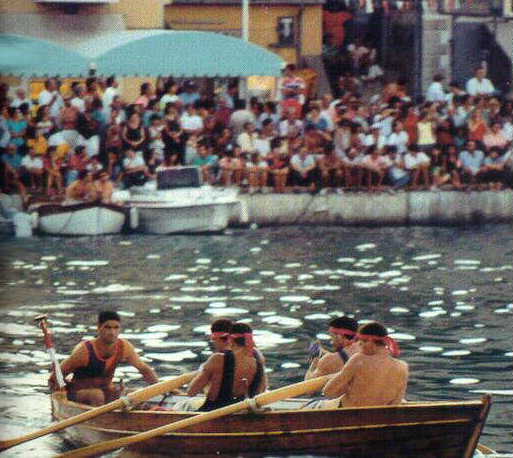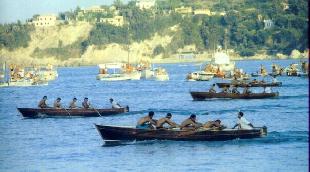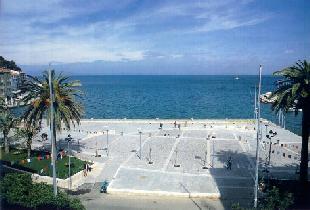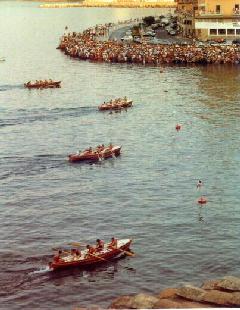Click on pictures to see full size |
||
The Crew Every boat has a crew of five men; a helmsman and four rowers, two on each side of
the boat. The first rower, near the stern, is responsible for |
||
The boats The wooden boats used in competition are called "guzzi". They are twenty
|
||
The race The race takes place on the "mirror of water" called Stadio
del Turchese, which is the old port, located in front of the town hall and the Piazza
|
||
| The race
is 4440 yards long and divided into ten equal lengths of 440 yards. There are five turns
around the orange buoys that are near the open sea and four turns around those near land. During these ten stretches of the race, the helmsmen look to gain yards by completing very efficient turns around the buoys, while the rowers expend everybit of energy to increase the distance between themselves and their adversaries. The winning team is acclaimed by the arrival of passionately enthusiastic spectators who plunge into the sea, fully dressed, and swim to the boat to give their congratulations to the crew. Sometimes there are so many people who climb on board, that the boat sinks under their combined weight. |
||
| During the palio one can hear many slogans being shouted by groups supporting
their team. As the boats near the buoys, a cry fills the air from those whose team is ahead and sigh of delusion follows from those whose boat turns last. The spectators, routing for the team that turns first, lifts their colored flags and waves them vigourously, coloring a section of the crowd after each of the ten turns. |
||
| Once the race has finished, the winning crew is asscorted to the town hall.
On the balcony above the crowd the Mayor presents them with the silken banner of The Palio and other prizes including a Golden Cup. If a quarter wins the race for three consecutive years the Gold Cup becomes the property of that quarter. In the faces of the local people one can see either the joy of winning or the bitterness of defeat. The time leading up to the race and during the race there exisits a very ethusiastic energy of confrontation between the various quarters. Verbale encounters sometimes seem hostile but never has this event provoked any physical violence. |
|
|
|






